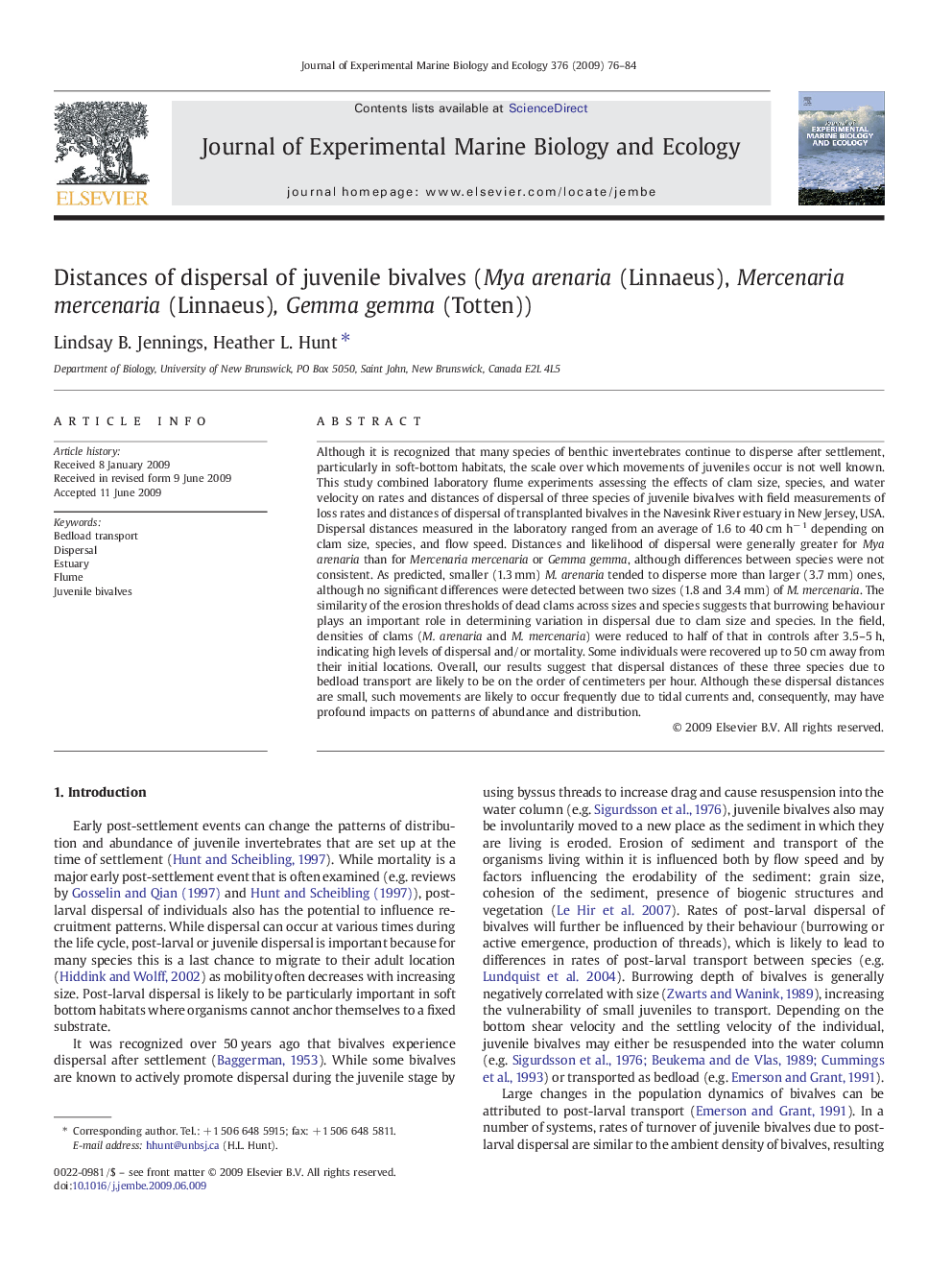| کد مقاله | کد نشریه | سال انتشار | مقاله انگلیسی | نسخه تمام متن |
|---|---|---|---|---|
| 4396943 | 1305854 | 2009 | 9 صفحه PDF | دانلود رایگان |

Although it is recognized that many species of benthic invertebrates continue to disperse after settlement, particularly in soft-bottom habitats, the scale over which movements of juveniles occur is not well known. This study combined laboratory flume experiments assessing the effects of clam size, species, and water velocity on rates and distances of dispersal of three species of juvenile bivalves with field measurements of loss rates and distances of dispersal of transplanted bivalves in the Navesink River estuary in New Jersey, USA. Dispersal distances measured in the laboratory ranged from an average of 1.6 to 40 cm h− 1 depending on clam size, species, and flow speed. Distances and likelihood of dispersal were generally greater for Mya arenaria than for Mercenaria mercenaria or Gemma gemma, although differences between species were not consistent. As predicted, smaller (1.3 mm) M. arenaria tended to disperse more than larger (3.7 mm) ones, although no significant differences were detected between two sizes (1.8 and 3.4 mm) of M. mercenaria. The similarity of the erosion thresholds of dead clams across sizes and species suggests that burrowing behaviour plays an important role in determining variation in dispersal due to clam size and species. In the field, densities of clams (M.arenaria and M.mercenaria) were reduced to half of that in controls after 3.5–5 h, indicating high levels of dispersal and/or mortality. Some individuals were recovered up to 50 cm away from their initial locations. Overall, our results suggest that dispersal distances of these three species due to bedload transport are likely to be on the order of centimeters per hour. Although these dispersal distances are small, such movements are likely to occur frequently due to tidal currents and, consequently, may have profound impacts on patterns of abundance and distribution.
Journal: Journal of Experimental Marine Biology and Ecology - Volume 376, Issue 2, 15 August 2009, Pages 76–84